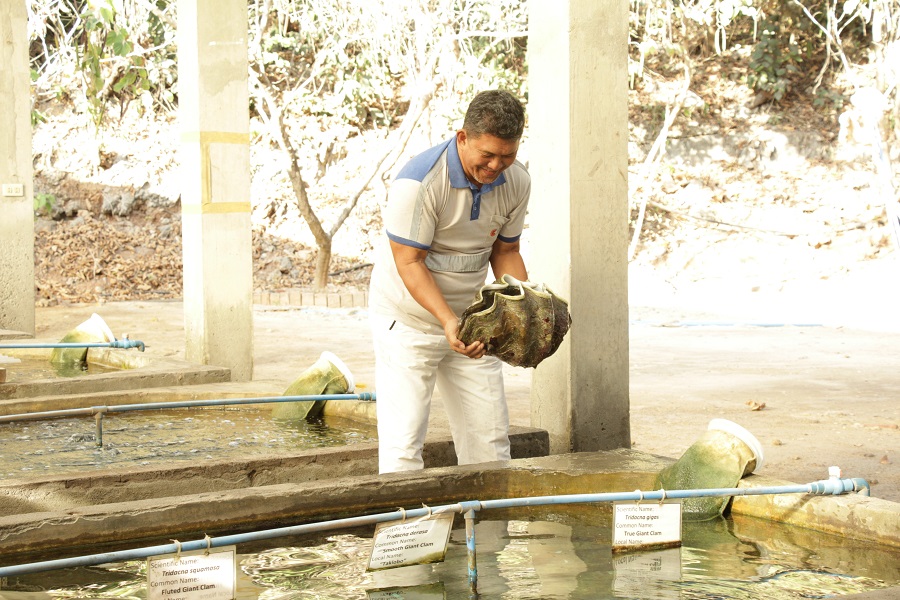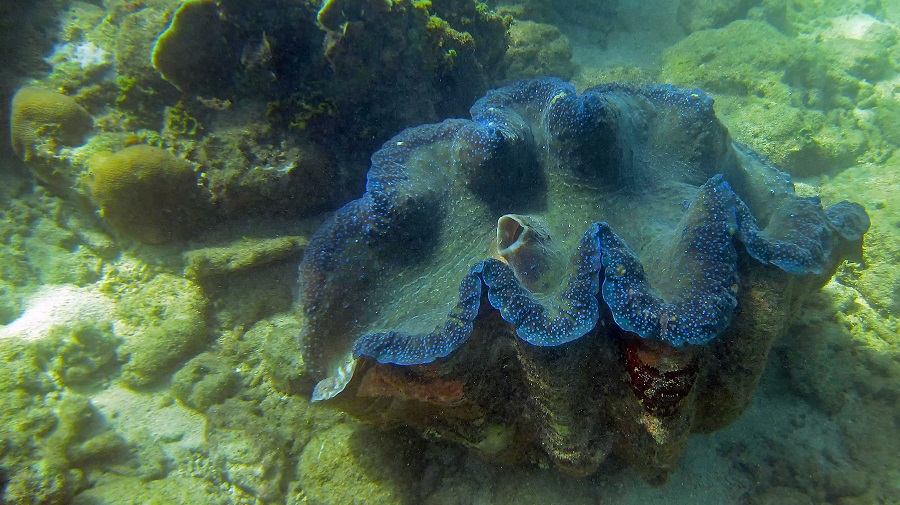
Employee Engagement
Education and Skills Training
Environmental Stewardship
Economic Empowerment
Emergency Preparedness
Awards
2022 SCC DEI Report

Semirara Marine Hatchery Laboratory
In 2010, SMPC led marine rehabilitation efforts by initiating the Semirara Marine Hatchery Laboratory (SMHL), developing technology that will improve Semirara island’s coastal environment and long-term fishing viability. Three (3) National Scientists for Marine Biology (Dr. Edgardo Gomez, Dr. Gavino Trono, and Dr. Angel Alcala) led SMHL’s efforts to become a center for rearing and reseeding eight (8) species of giant clams or Tridacna gigas, known to promote marine life and biodiversity.
Giant clams served as catalysts for improving marine biodiversity, its symbiotic relationship with corals and fishes enlivening the waters where they reside. These endangered clams are known as filter-feeders, cleaning the seawaters and attracting other marine species and rehabilitating the reefs. As of 2018, there have been 80,146 giant clams reseeded around the island, with a total of 163,267 surviving clams or an increase of 38.79% from last year. Around 50 giant clams from the hatchery in Semirara island were subsequently spawned along the shoreline of CPC.
SMHL has also undertaken coral transportation in 2014 to preserve further the balance of marine ecosystems. This rehabilitative process brings coral fragments detached from their original reefs through natural processes (such as strong waves or typhoons) and attached to new reefs such as those found around the island, repopulating the reef through asexual reproduction.
Marine Biodiversity Survey
In 2015, SMPC engaged the services of Silliman University Angelo King Center for Research and Environmental Management (SUAKCREM) to conduct a survey of the whole coastal area of Semirara Island.
A team of marine biologists, led by its former director and National Scientist Dr. Angel Alcala, teamed up with representatives of Barangays Alegria and Tinogboc to study the seawater and identify areas that can be declared as protected. The data generated from the survey would then serve as a baseline record for the coastal management of the Island's marine resources.
Based on the results, contrary to expectations for mining areas, the reefs surveyed had extensive coverage of live hard coral cover and relatively high fish biomass and density.
Considering the results, a multi-sectoral conservation effort was recommended, wherein Marine Protected Areas (MPAs) may be established in Barangays Alegria and Tinogboc to stabilize the coral reef systems and increase fish population.





